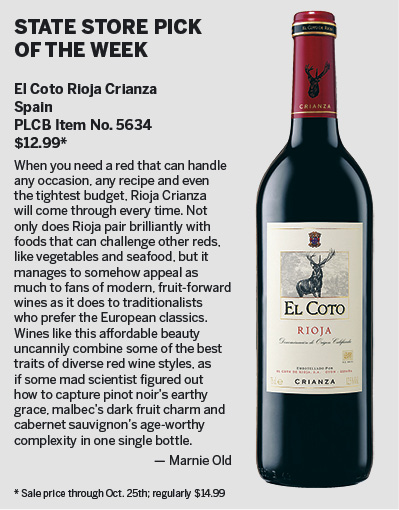Cheap Buzz: Rioja means more than red in Spain
BUZZ: Hey, Marnie, I saw a big display of Spanish wines that were a mix of red, white and rose, but they were all labeled "Rioja."
/arc-anglerfish-arc2-prod-pmn.s3.amazonaws.com/public/WCJRZXURZ5BGDGMJKXU5DYSDCM.jpg)
BUZZ: Hey, Marnie, I saw a big display of Spanish wines that were a mix of red, white and rose, but they were all labeled "Rioja."
Marnie: October is Rioja month in Pennsylvania wine and spirits stores, so I'm not surprised by that.
Buzz: "Rioja" means red, so why the blanca are they calling white and pink wines Rioja, too?
Marnie: Buzz, I can see how you might have gotten confused. The words for red in Spanish are "rojo" for things that are considered male and "roja" for those considered female.
Rioja is not a wine color, it's a regional place-name and a regulated wine appellation, like French Champagne or Italian Chianti. La Rioja is a province in northern Spain that takes its name from the local river Oja, or in Spanish, the Rio Oja. It just so happens to be Spain's most famous wine region and, yes, most of its wines are reds, made with the Tempranillo grape.
Buzz: OK, now I gotcha. Are they any good?
Marnie: Absolutely. I often recommend Spanish Rioja because it's such a crowd-pleaser and a remarkable food partner - like the little black dress of the red-wine world. Being sandwiched between the cooling influence of the Atlantic and the milder Mediterranean, Rioja's vineyards produce some of Spain's finest Tempranillos.
Buzz: Why you like 'em so much?
Marnie: They combine both richness and refreshment, offering plenty of flavor and complexity without losing their balance. And they're particularly well-suited to long-term barrel aging. The region's white and pink wines are delicious, too.
Buzz: I prefer dresses on you, but the barrels sound pretty good to me for the wine.
Marnie: If you like oak-aged spirits, like bourbon and other whiskeys, you'll love the toasty layer of flavor and smoothing of texture that barrel-aging brings to Rioja wines. This region takes tremendous pride in aging its wines, holding them back in barrels and then again after bottling, so they can be sold at their peak.
They even have label designations that flag premium wines that have spent the most time maturing. Rioja Crianza wines spend at least a year each in barrels and bottles before release. Rioja Reserva and Gran Reserva get even longer aging, and are often released five to 10 years after they were harvested.
Buzz: Like a 10-year-old bourbon? You know what I like. Count me in!
Marnie Old is a local sommelier and wine author. Check her out at MarnieOld.com or follow her on Twitter at @MarnieOld. Buzz's musings are interpreted by Daily News Assistant Managing Editor Gar Joseph.
